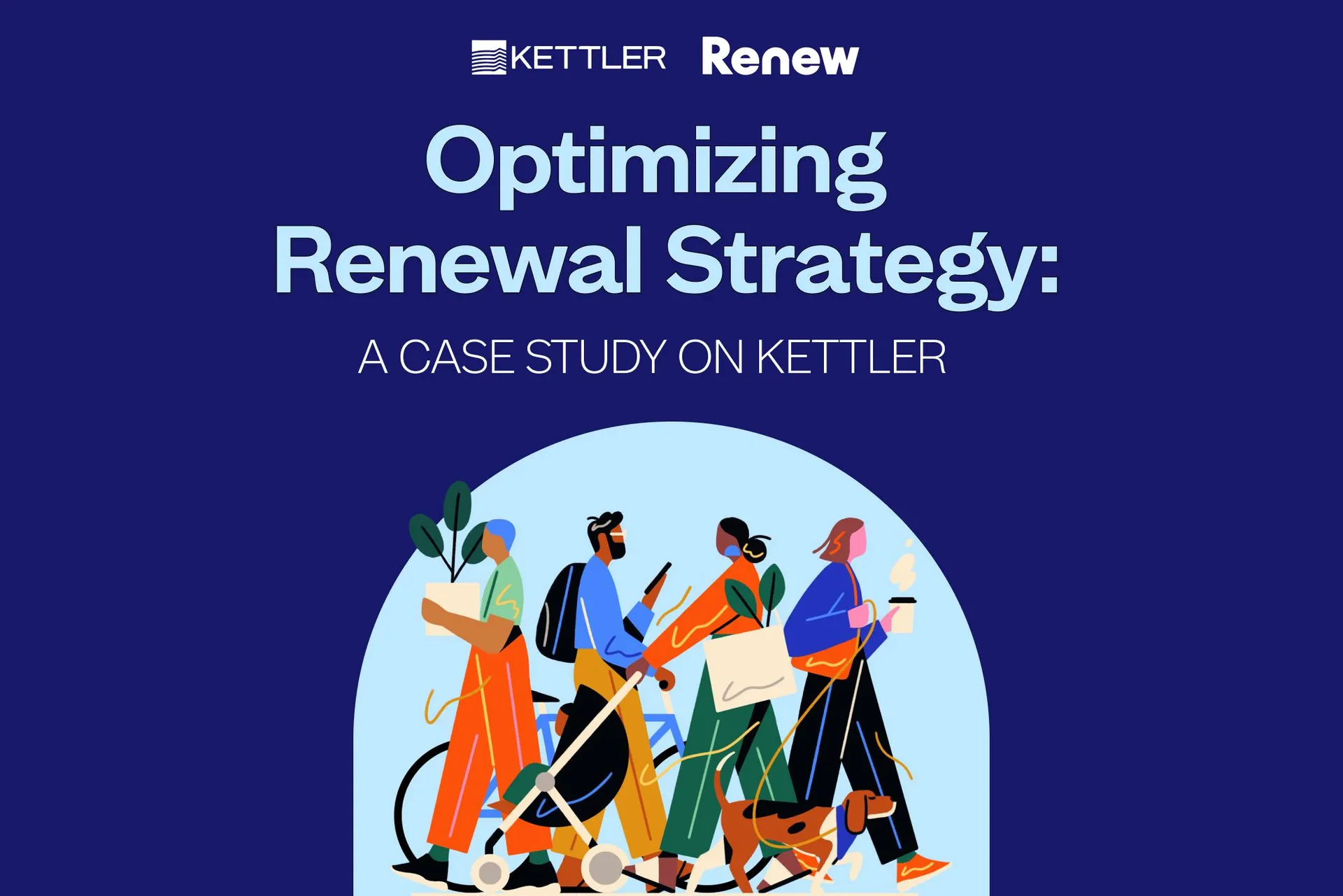










.png)






























Give Your Ancillary Revenue a Second Bite at the Apple
You know all those extras you offer at the leasing moment — parking, storage, pet fees, insurance — and the revenue they bring in? Now you can offer them again, effectively, at the renewal moment, when residents are already making a big decision.
The Renew Revenue Ecosystem surfaces these opportunities right in the renewal flow, turning every lease event into a fresh chance to grow portfolio value.
features
Unlock New Revenue Streams — With The Products You Already Sell
The Renew Revenue Ecosystem doesn’t just capture renewals — it incorporates your ancillary income programs at renewal and move-out with built-in features that drive more value from every resident interaction.
Rentable Items
Ancillary Products
Incentive Management

.svg)

.svg)

.svg)
Monetize Every Moment
Frequently Asked Questions
Revenue Ecosystem increases ancillary revenue by embedding upsell opportunities directly into the lease renewal workflow. Rather than relying on site teams to re-market parking, storage, or pet fees manually, these options surface automatically when residents are already reviewing terms.
This timing matters: residents are in “decision mode,” so adoption rates are higher. By capturing revenue in the same flow as apartment lease renewals, operators see stronger per-unit revenue, reduced reliance on concessions, and incremental NOI growth across the portfolio — without adding work to site teams or disrupting the resident experience.
With the Revenue Ecosystem, operators can surface high-demand rentable items like parking, storage, and pet fees — often adding $20–$150 per unit per month. Operators can also configure community-specific add-ons, like bike lockers, furniture, or package services, to match resident needs.
Because these rentable items are built directly into the rental renewal flow, residents choose them at the same time they renew a lease, eliminating the friction of separate sales conversations and turning everyday amenities into steady, recurring income. Scaled across a multifamily portfolio, this creates ancillary revenue that compounds quickly across thousands of units.
For multifamily property operators, the renewal moment is uniquely effective for offering ancillary products because residents are already weighing housing costs and commitments. Unlike move-in, where decisions are rushed, the renewal moment gives residents time to consider add-ons like insurance, utilities, or move-out services in context.
By surfacing these products alongside lease renew offers, operators position them as part of a natural package rather than a separate purchase. This not only raises adoption rates but also improves the resident experience by simplifying choices. For operators, it translates into measurable ancillary income with minimal additional workload.
Incentives encourage residents to act sooner, and the Renew Revenue Ecosystem builds these directly into the renewal lease agreement process. Operators can use cash-based or integrated rewards programs to motivate early lease commitments, completed notices-to-vacate, or other high-value actions.
This accelerates decision-making and reduces the risk of vacancy loss. By tying rewards to tenant retention strategies, operators gain better forecasting visibility, protect NOI, and ensure site teams spend less time on last-minute renewals — while residents enjoy a smoother, more rewarding experience.
The Renew Revenue Ecosystem is built into the Renewal Management System (RMS) and works seamlessly with your lease management software, PMS, or CRM. It integrates with core property management technology systems, so renewal offers, fees, and resident actions flow back into the tools your team already uses. That means operators capture ancillary revenue without adding duplicate workflows or manual reporting.
By layering property management automation on top of your existing platforms, the Renew Revenue Ecosystem turns lease renewals into opportunities for upsells, incentives, and fee management. Operators gain more revenue and stronger resident retention while their PMS and CRM continue handling accounting, leasing, and prospect management — creating a fully connected portfolio ecosystem.
Manually tracking resident fees often leads to errors and missed income, especially for large multifamily operators. The Renew Revenue Ecosystem standardizes common charges — like parking, storage, or pet rent — so they’re applied consistently across the portfolio.
Operators can update fees centrally in the platform’s lease portfolio management software, and changes flow directly into the renewal workflow. This eliminates double entry, ensures compliance, and guarantees residents see accurate, transparent charges in their lease renewal agreement. The result is fewer disputes, more reliable revenue, and easier administration at scale.
Revenue capture doesn’t stop with renewals. Revenue Ecosystem also monetizes the non-renewal of leases, surfacing opportunities like cleaning fees, move-out services, and insurance requirements. These items are embedded in the notice-to-vacate flow, so residents complete them alongside required forms.
For operators, this reduces missed charges and generates ancillary revenue even when residents leave. And with Renew Marketplace, departing residents can be directed to in-portfolio properties — turning potential tenant turnover into retention while maximizing revenue at every stage of the resident lifecycle.
New resident acquisition is expensive, with marketing costs, concessions, and tenant turnover expenses eroding margins. The Renew Revenue Ecosystem helps operators capture more value from existing residents by monetizing renewals through rentable items, ancillary products, and incentives.
This stabilizes occupancy and creates recurring income, reducing the pressure to constantly fill units with new tenants. Every Renew apartment lease becomes a profitable event that strengthens NOI and portfolio performance — allowing operators to shift resources away from acquisition spend and toward apartment resident retention.

.svg)











.svg)
.svg)


.svg)